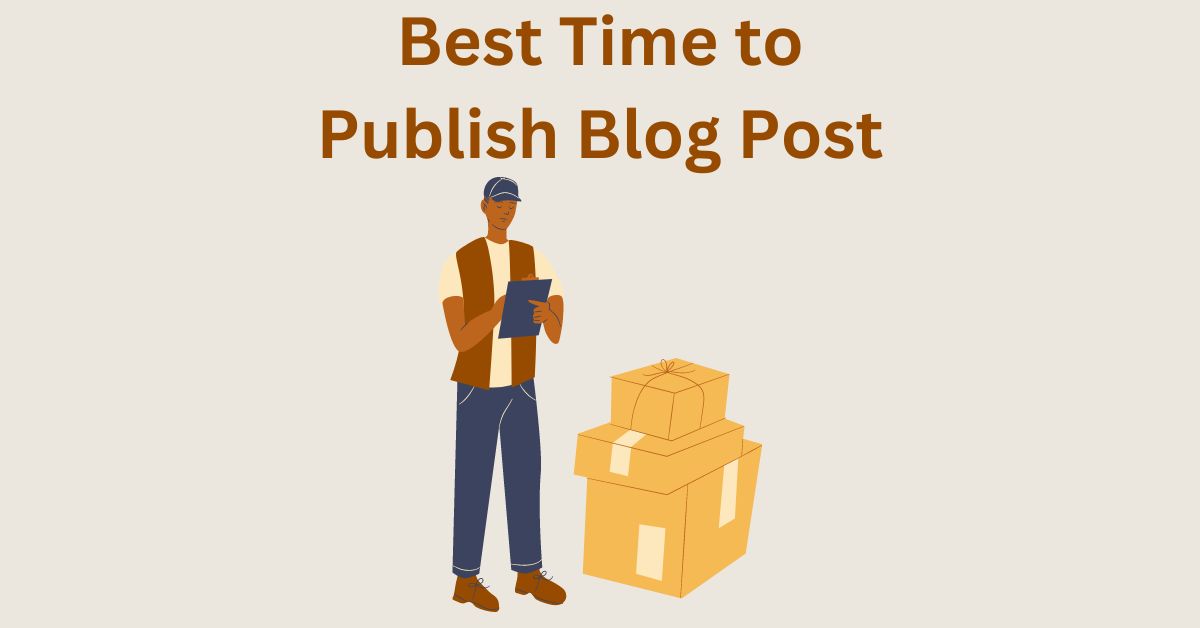Best Time to Publish a Blog Post to Engage with Your Audience – The Ideal Frequency
Estimated reading time: 5 minutes
Last updated on March 22nd, 2024 at 05:44 am
Do you want to know “The Best Time to Publish a Blog Post”?
Think of it like choosing the perfect time to share your stories with the world.
Just like choosing the right moment to post a picture on social media, the timing of your blog post matters.
Did you know that blog posts published on Tuesdays get the most traffic?
It’s like picking the sweet spot to catch more readers.
In fact, studies show that posting on the right day can increase engagement by up to 40%.
Understanding Your Audience
It’s like knowing when your friends are most likely to answer their phones.
You want to catch them when they’re free.
Similarly, with your audience, you need to figure out when they’re most active online.
Did you know that around 9 am on Tuesdays is often considered a good time for many blogs?
It’s like hitting the sweet spot!
Analyzing Peak Traffic Times
Think of this as finding the busiest time on a highway.
You want to publish your post when most people are cruising the internet.
For example, studies show that blog traffic often peaks on weekdays between 9 am to 3 pm.
That’s when the online highway is buzzing!
Factors Influencing Optimal Timing
Just like weather conditions can affect your plans, certain factors can influence when it’s best to publish.
Are your readers night owls or early birds?
Also, consider time zones – you want your post to hit when it’s morning coffee time for your main audience.
Tailoring your timing can significantly impact your blog’s visibility.
Here’s a fun fact: Blog posts published on Saturdays tend to get more comments on average.
It’s like people have extra time to engage during the weekend!
Weekday vs. Weekend Publishing
Think of your blog like a weekend movie release.
Would you release it on a Tuesday morning? Probably not.
Similarly, choosing between weekdays and weekends for publishing matters.
Weekdays: It’s like airing your favourite TV show during prime time.
More people might be online, especially from Tuesday to Thursday.
Studies show that Tuesday is often considered the best day for maximum engagement.
Weekends: Think of this as a cozy Sunday movie night.
People have more time to relax and explore, and blog engagement is often higher on Saturdays.
Plus, there’s less competition from other content.
Time Zone Considerations
Ever tried calling a friend in a different time zone? Timing matters!
Your blog readers might be spread across the globe, so consider when they’re awake and active.
For example, if you’re in New York but have a significant audience in London, publishing at noon your time might hit the sweet spot for both sides of the pond.
Utilizing Analytics Tools
Imagine having a superpower that lets you see how many people are watching your show. Analytics tools are a bit like that.
Google Analytics, for instance, helps you understand when your blog gets the most traffic.
It’s like a backstage pass to your blog’s performance.
With this data, you can see which days and times are the prime slots for your content.
Here’s a fact: Blogs that use analytics to guide their posting times often see increased engagement.
It’s like having a map to navigate the best routes for your content to reach your audience.
Testing and Refining Your Strategy
Imagine you’re baking a cake.
The first time, you might tweak the ingredients or the oven temperature to make it just right.
Testing and refining your blog publishing strategy is a bit like that.
Test: It’s like trying different recipes.
Experiment with posting at various times and days. See what works best for your audience.
Maybe they’re night owls, and a late-night post gets more attention.
Refine: Once you find what works, it’s like perfecting your recipe.
Stick with what’s effective, but always be ready to adapt.
If you notice a shift in your audience’s online habits or preferences, adjust your strategy accordingly.
Did you know that businesses that regularly update and refine their blogging strategy tend to see more significant growth in traffic over time?
The Impact of Social Media
Think of social media as the megaphone for your blog. It’s like telling everyone about your awesome TV show. The impact is huge!
Sharing: When you share your blog posts on platforms like Facebook, Twitter (X), or Instagram, it’s like announcing your showtime.
More people get to know about it.
Engagement: Social media is where the party happens.
People comment, share, and discuss your content.
It’s like having an after-show party where everyone talks about what they loved.
Fun fact: Blog posts shared on social media get about 6 times more engagement than those that aren’t.
It’s like having a big audience cheering for your content!
Wrapping Up – Best Time to Publish a Blog Post
Figuring out the best time to post a blog depends on who you’re trying to reach, what you’re talking about, and where you’re posting.
While there are some general tips, like considering when your audience is most active, it’s not a one-size-fits-all rule.
The key to success is consistently creating good content that people find interesting.
Keep an eye on how your audience reacts, and be ready to adjust your posting times based on what works best for them.
